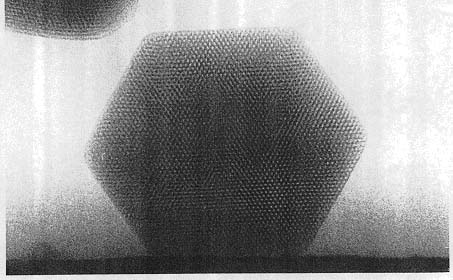
This year 2001, the prize is given to Prof. Kåre Larsson, from Lund University and Camurus Lipid Research Foundation for the discovery of cubosomes and hexosomes and explorative work on their applications. KÃ¥re Larsson started his research as X-ray crystallographer at Göteborg university, and in his thesis 1964 the first crystal structures of fatty acid mono-, di and triglycerides were reported. He then went to work for two months as a post-doctoral fellow in the group of V. Luzzatti in Gif sur Yvette in order to learn their X-ray methods. Back in Sweden he extended the crystal structure work on lipids to involve liquid-crystalline phases of lipid-water systems. Kåre Larsson was then called to became Professor of the Departement of Food technology at Lund University in 1975, and pioneered a new cross-disciplinary approach of modern colloid science in foods. An important contribution beside food research was the first demonstration that inverse cubic lipid-water phases are infinite periodic minimal surfaces (Chem. Phys. Lipid 1980, 27, p.321 and Nature 1983, 304 p. 664). The formation and structure of cubosomes was first described in 1989 (J. Phys. Chem. 93, p. 7304).
In 1995, 1996 and 1997, a now classical series of papers explaining how finely divided micronic aggregates are formed were published. Such aggregates are composed of a liquid crystal (cubic or hexagonal ) which is stabilised either by electrostatics or by a multilayer ( Z Kristallogr. 1995, 210 p. 315; Langmuir 1996 12 p.4611 and Langmuir 1997 13 p.6914) . An electron microscopy of an individual cubosome is shown on the picture below.

Stable micronic dispersions can be obtained with moderate milling energy and are stable for months. The unit cell distance in the cubosome is about 20 nm, and the aggregate is around one micron. These dispersions are able to solubilise antibiotics or other pharmaceutical agents. Hence, gels for dental care could be formulated. These are injected between teeth and gingival, adhesion and viscosity are such that an ultra-slow release of antibiotics is obtained. A very successful new method in dental care.
This success story of stable emulsions of lyotropic liquid crystals requires basic knowledge of phase diagrams, cubic structure, general concepts in curvature of soft condensed material, together with extraordinary patience in characterisation in formulation. The cubosome/hexosome discovery, understanding and use is an exemplary study how modern colloid science integrate basic research and application.
